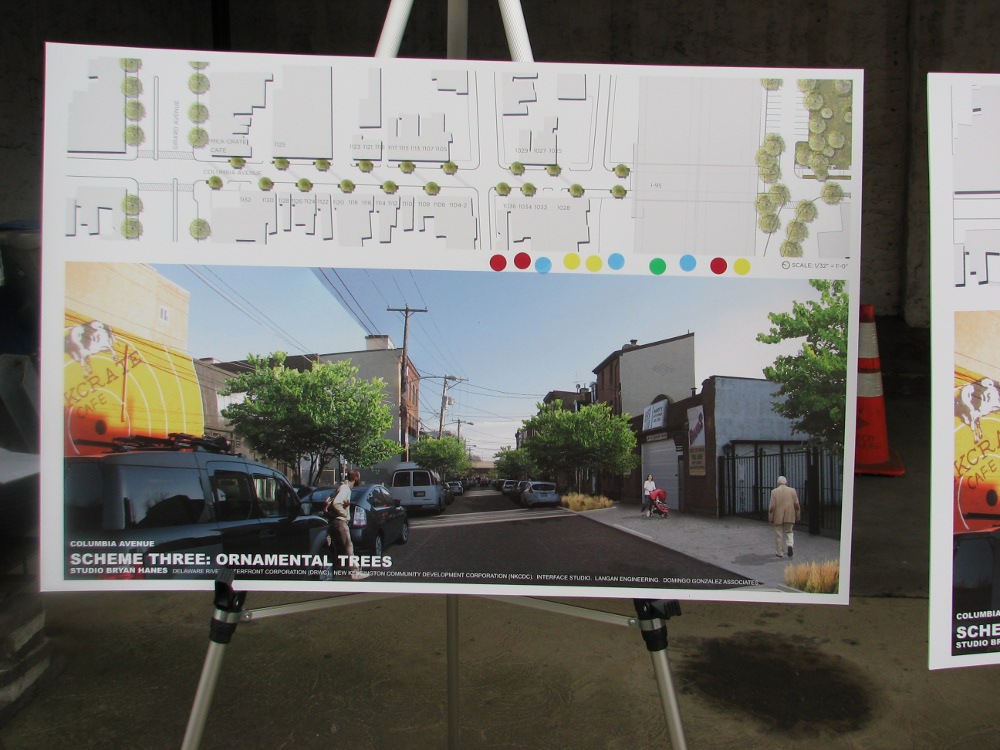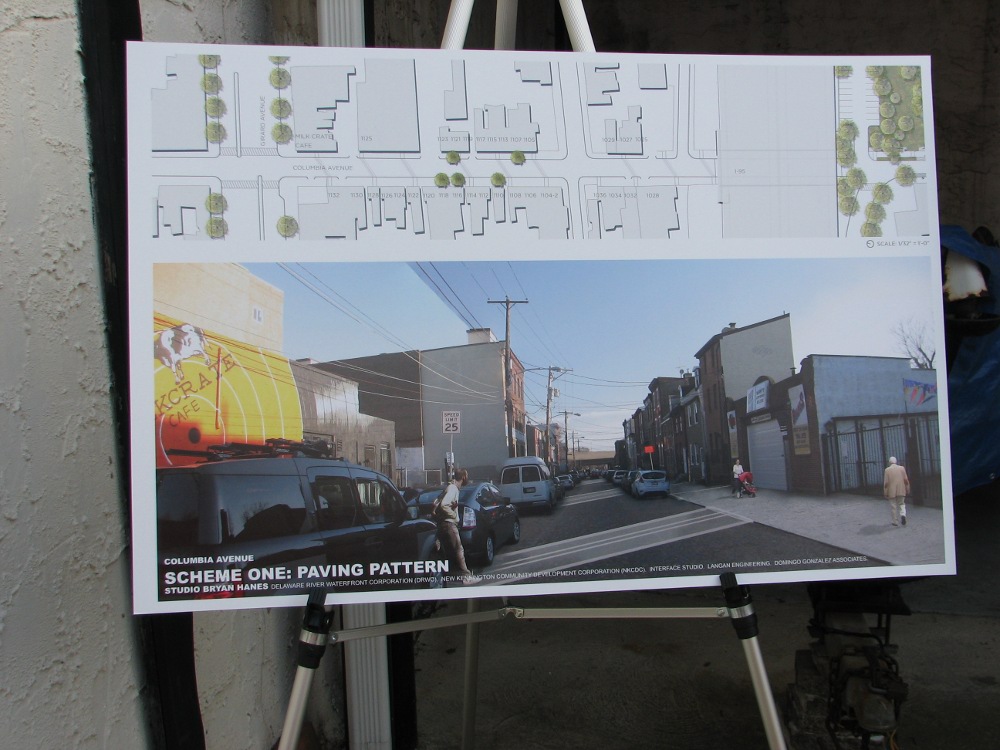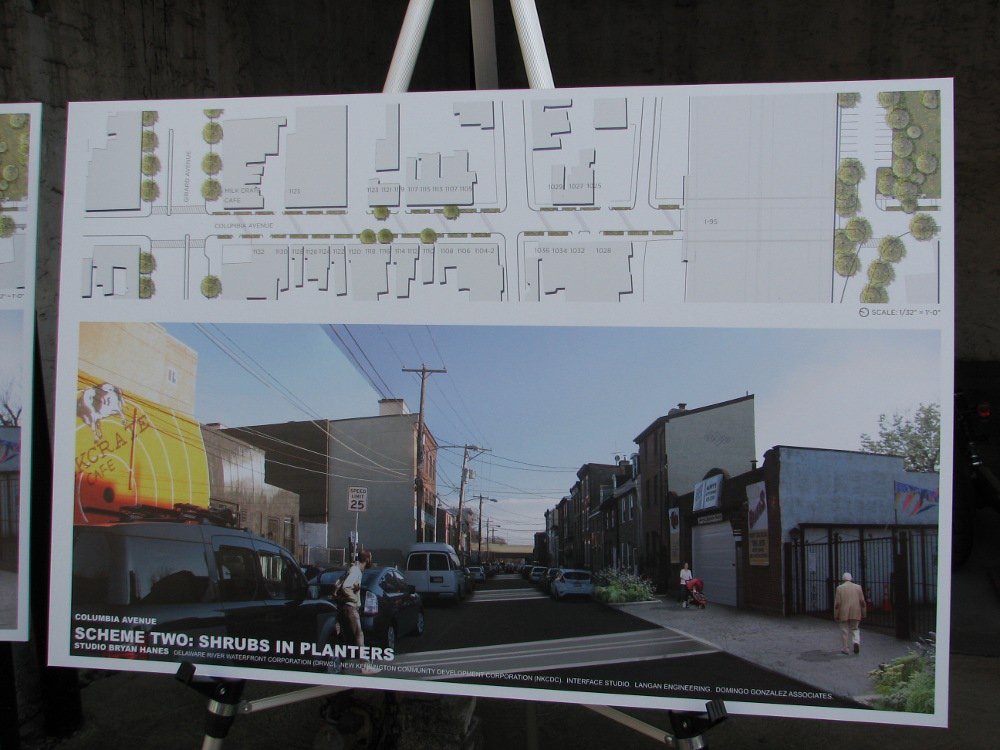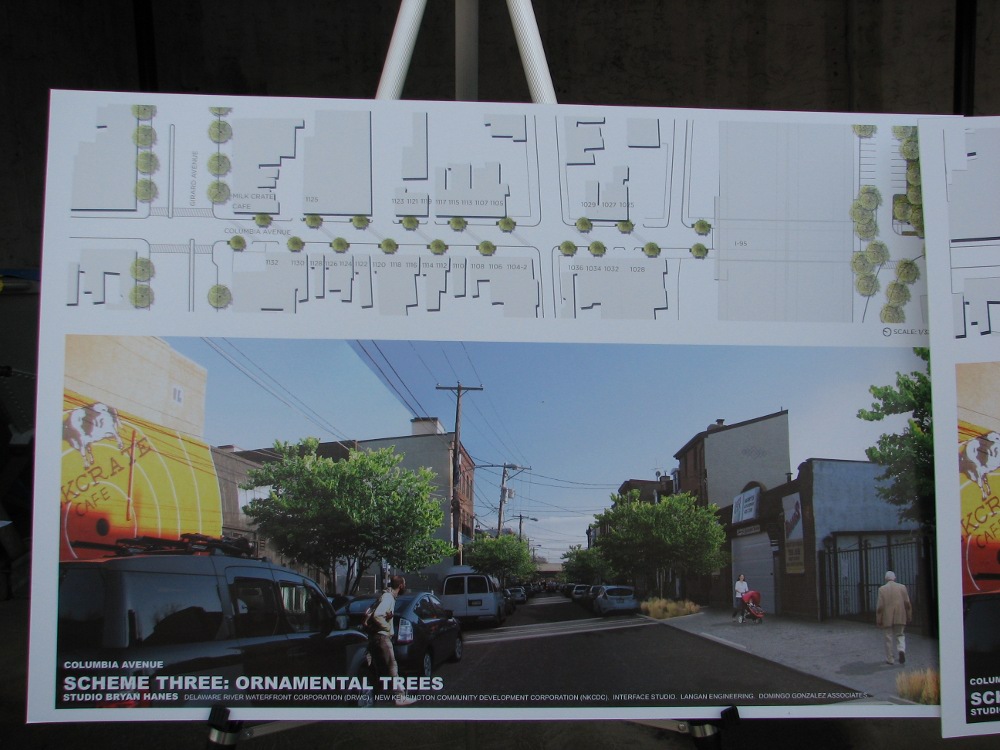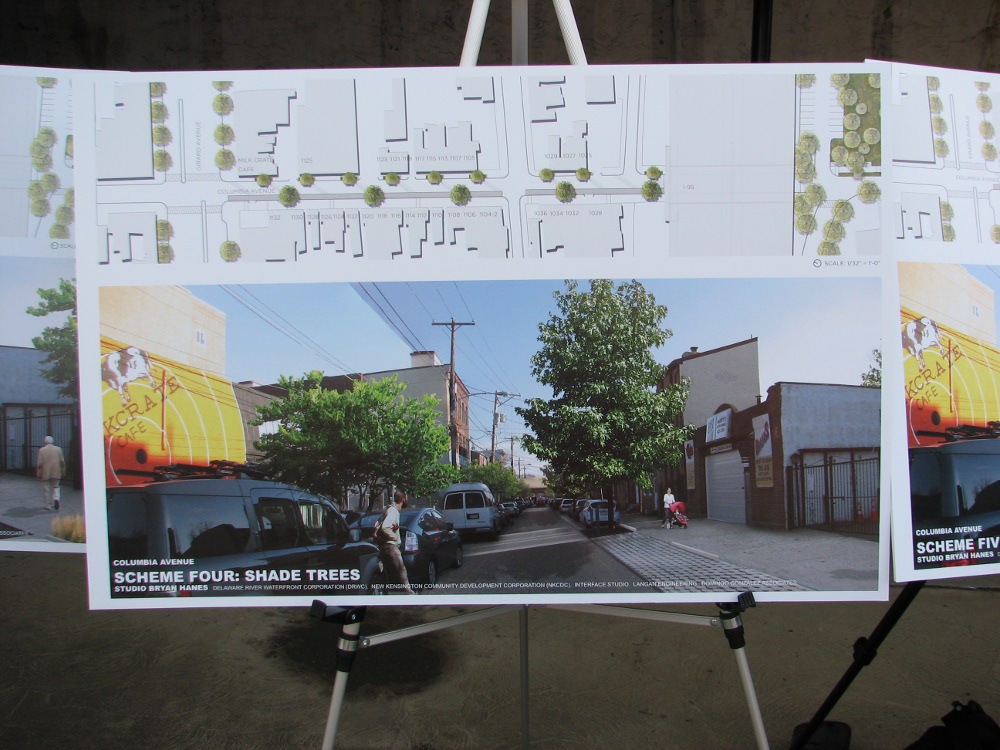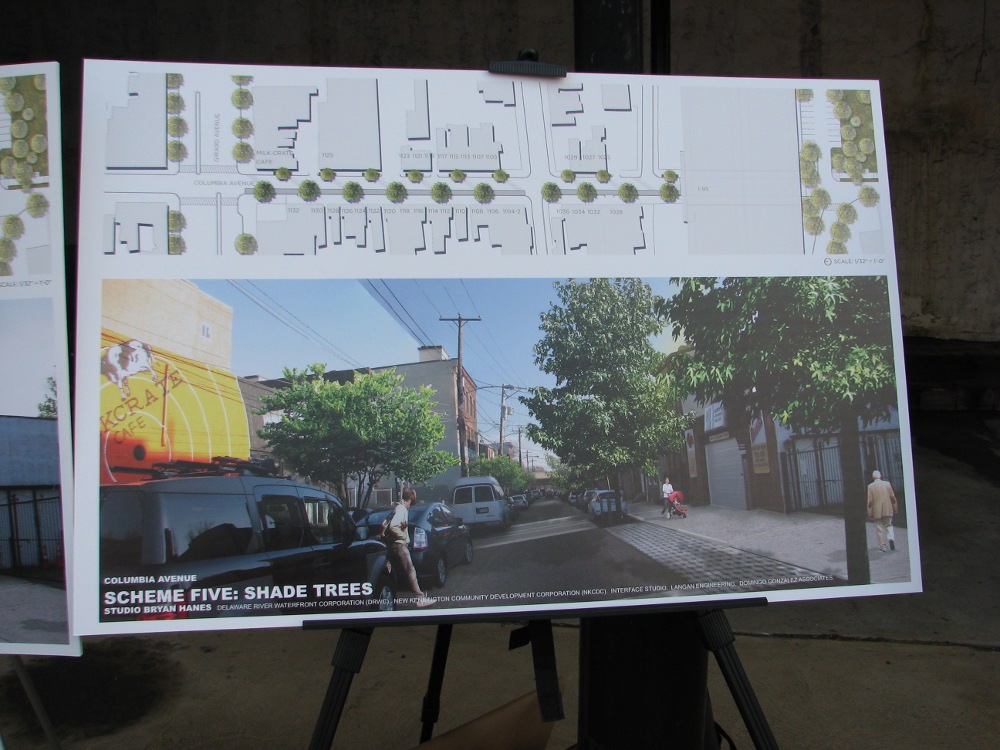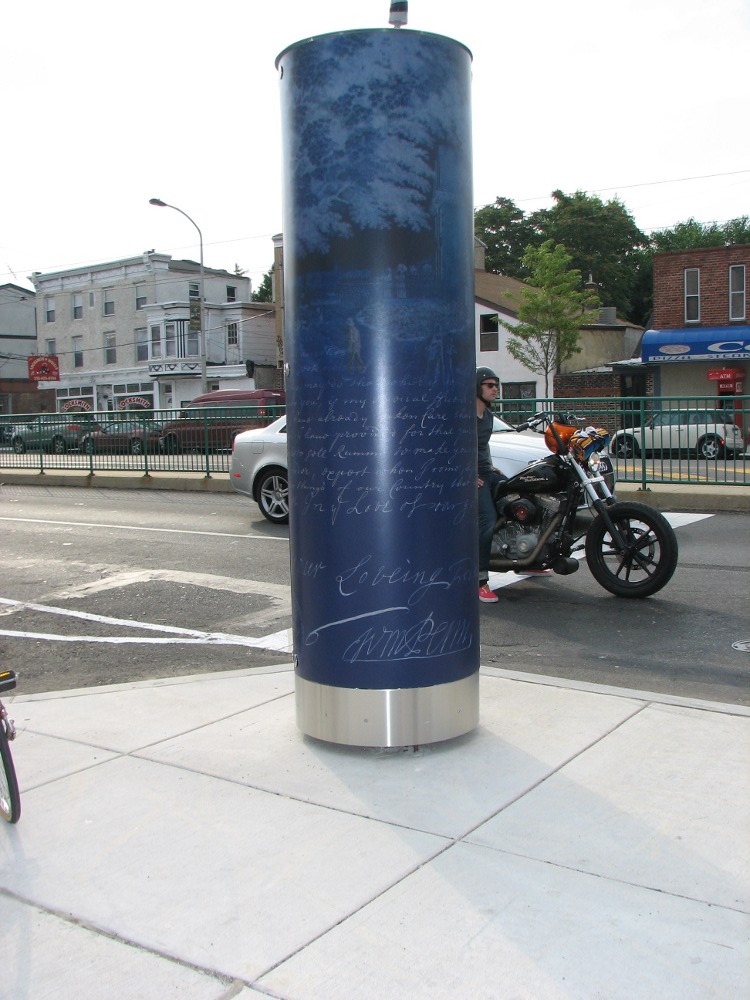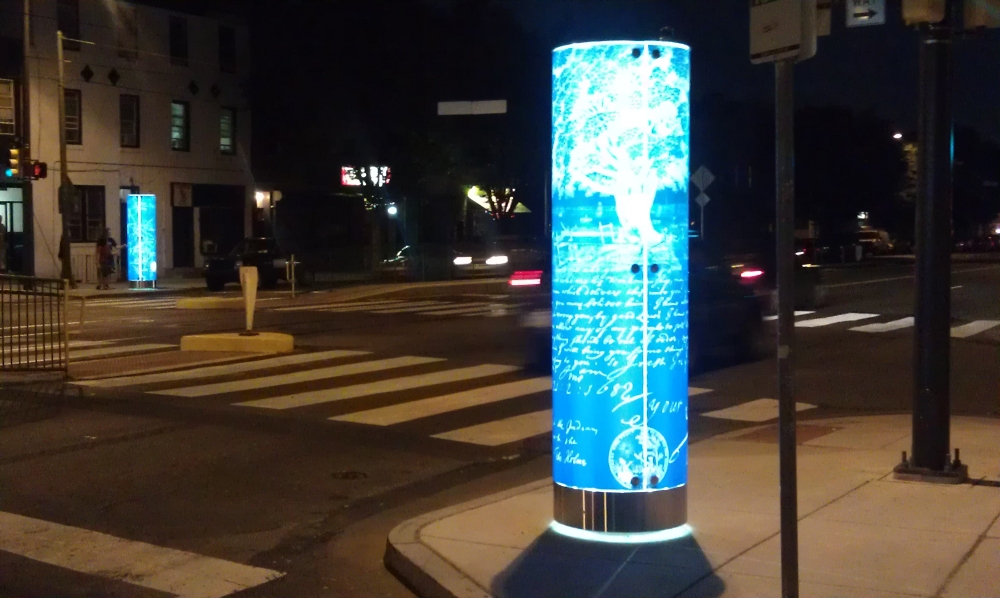New light columns unveiled at Columbia and Girard, Columbia Connector design options narrowed
Two new light columns depicting the history of Fishtown and Penn Treaty Park were unveiled at Columbia and Girard avenues Tuesday, and residents chose their favorite design for future Columbia street improvements.
The light columns are part of New Kensington Community Development Corporation’s Take Me To the River project. This work began even before the city started its work on reconnecting Kensington, Fishtown and other neighborhoods up and down the Central Delaware Riverfront with the river, said NKCDC Executive Director Sandy Salzman.
NKCDC Executive Director Sandy Salzman talks about this and related projects and all the people and organizations working together.
More columns are planned for key Girard Avenue intersections with streets that lead to the river, said landscape architect Bryan Hanes, who has worked both on NKCDC’s Girard project and the Columbia Avenue Connector project it intersects. Led by the quasi-city Delaware River Waterfront Corporation, which has worked in conjunction with NKCDC, PennDOT, and other organizations, the Columbia Avenue Connector project is being designed to make traveling between Fishtown and Penn Treaty Park and the river more pleasant and obvious.
After learning about the columns and having a chance to view five different schematics put together by Hanes and the DRWC, based in part on an earlier public input session, attendees used stickers to chose the design they liked best.
All of the plans included plantings and other design elements, but there was a range of planting intensity, from relying mostly on the currently existing trees to adding both smallish, ornamental trees and larger shade trees. If shade trees were desired, Hanes suggested elm trees to tie in with the famous Great Elm where Chief Tamanend and William Penn are said to have signed a treaty of friendship.
DRWC Planning Director Sarah Thorp on the Connector project and Preservation Alliance’s Patrick Haunk on the role of history.
The option that got the most votes was in the middle, and included the smaller trees at sidewalk level, but no larger shade trees at street level.
Some residents were concerned that the larger trees would take away parking spaces.
The larger trees would not only take up needed parking places, but would get hit by cars, said neighborhood resident Chris Rouse. Rouse, a plumbing engineer, said he also had concerns that down the road, tree routes might interfere with utilities under the street. He likes the smaller, sidewalk level trees, but said of the larger ones: “Cars belong on the streets, not trees.”
Hanes and DRWC Director of Planning Sarah Thorp didn’t just count dots. They listened to conversations at the boards depicting the options.
Thorp said she heard people saying they liked the smaller trees of Option 3, but liked some of the pavement options – such as the inclusion of patterns that resemble the wampum belt Tamanend gave to Penn – from other alternatives.
Hanes will work on a design that uses the landscaping that was chosen, but works in these other elements.
Landscape architect Bryan Hanes on the various options.
The portion of the project from the underpass to the park is funded, largely because PennDOT will pick up much of the cost as it redoes the area as part of Revive95.
Attendees also got a chance to meet artist Donald Lipski, who is designing the public art component of the connector project.
Lipski said he has many ideas, and is leaning toward doing multiple pieces of art to lead people down to the waterfront, rather than one monolithic piece. Lipski said he wants to talk to local residents to “find out more about the mythology here, the history, the icons, the legends” which will help him narrow his thoughts into the proper form the art for this project should take. “Somehow, I think that if all of this feeds into what I make, it will be richer and more resonate artwork.”
Artist Donald Lipski talks about his work.
Thorp said once the designs for the art and other portions of the project are finished, probably in the fall, DRWC will begin fundraising.
Construction of PennDOT’s piece isn’t set to begin for another two years or so, Thorp said. But in a way, she said, that’s good news for residents: It gives DRWC a bit of time to get money together, and with any luck, the entire project can be done at the same time, limiting disruption.
WHYY is your source for fact-based, in-depth journalism and information. As a nonprofit organization, we rely on financial support from readers like you. Please give today.



